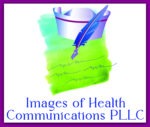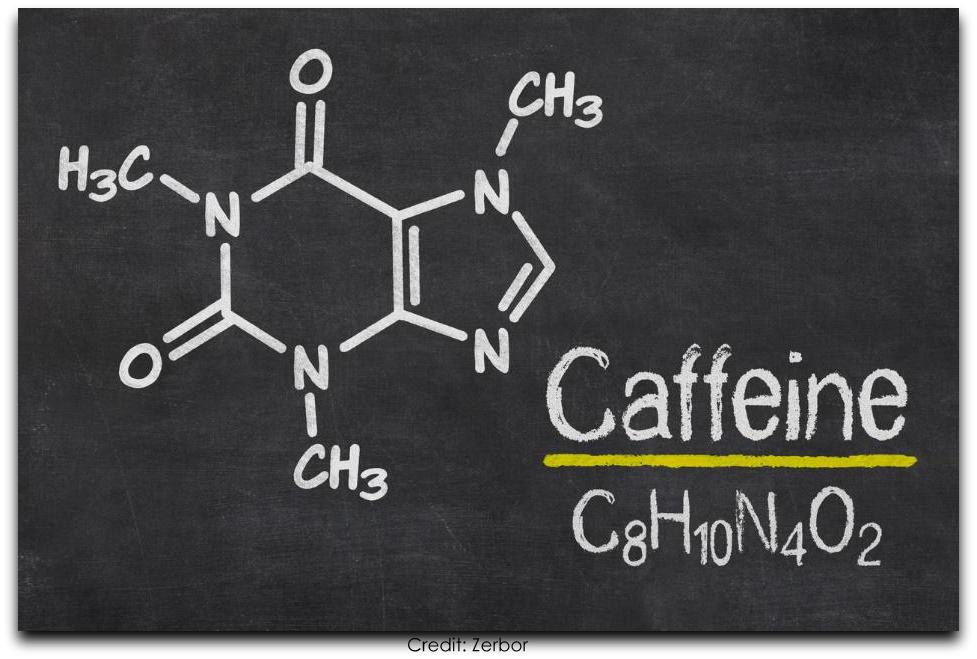Caffeine

Welcome to Insights! Please enjoy the articles created specifically for Soul’s Harbor and provided on a monthly basis. You may expect health related articles with a focus on addiction and recovery.

Caffeine
Caffeine is the most widely consumed legal stimulant or psychoactive drug in the world. It affects the brain’s reward system by causing changes in a person’s mood, feelings, or behaviors.People tend to think of coffee or energy drinks as the most prevalent sources of caffeine, but it may be found in tea, chocolate, over-the-counter medications, various prescribed medications, soft drinks, dietary aids, energy shots, and snack bars.Caffeine is a bitter substance that occurs naturally in the leaves and seeds of over 60 different plants including (1, 4):
Most people consume caffeine from drinks. The amount of caffeine in different drinks can vary a lot, but it is generally (1):
-
8-ounce cup of coffee: 95-200 mg
-
12-ounce can of cola: 35-45 mg
-
8-ounce energy drink: 70-100 mg
-
8-ounce cup of tea: 14-60 mg
Of all the food supply ingredients worldwide, caffeine is the most thoroughly studied (Temple et al., 2017, p.1). It is added to food and non-food items with the promise of increased energy, happier mood, greater alertness, and increased arousal.Various health and regulatory authorities have increased their critical observations regarding caffeine’s cumulative effects on behavior and physiology. There is specific concern regarding people with underlying heart and other health conditions, children, adolescents, young adults, and pregnant and lactating women (Temple et al., 2017, p.1).While caffeine is noted to be a psychoactive drug, it is not included in the Diagnostic and Statistical Manual of Mental Disorders, 5th Edition (DSM-5) for Caffeine Use Disorder (CUD). It is recognized as a condition that requires further study to better understand the clinical significance among the general population (Addicott, 2014, p. 186). The DSM-5 does recognize these potential diagnoses when symptoms cause clinically significant distress or impairment (Sweeney, et al., 2020):
-
Caffeine intoxication.
-
Caffeine withdrawal.
-
Caffeine-induced anxiety disorder.
-
Caffeine-induced insomnia.
Estimates of Caffeine Consumption
Regular caffeine consumption is estimated to be consumed by 85% of the adult population in the United States with a daily average intake of two cups of coffee averaging 180 mg/day (Temple et al., 2017, p. 2).
NHANES (National Health and Nutrition Examination Survey) 1999 – 2011 data used in a study by Ahluwalia and Herrick (2015), indicated 75% of U.S. children between 6 and 19 years of age consume caffeine, with an average consumption of 25 mg/day in children 2-11 years old, and 50 mg/day in children 12-17 years old (Temple et al., 2017, p. 2).Children usually begin their intake of caffeine in the form of chocolate, soda, and chocolate milk. As they become adolescents there is an increase in the consumption of soda (Temple et al., 2017, p. 3).
How does caffeine affect our body?
Caffeine is a methylxanthine, is closely related to theophylline, and it is rapidly and completely absorbed by the gastrointestinal tract (2).It works by binding to adenosine receptors located in the central and peripheral nervous systems as well as to the various organs such as the heart and blood vessels (Temple et al., 2017, p. 3).Adenosine is a molecule involved in numerous biochemical pathways, mostly for energy transfer and signaling. Adenosine is a neuromodulator that can promote sleep, affect memory and learning, and protect cells after insults (Temple et al., 2017, p. 3). Caffeine acts as an antagonist to adenosine. It stimulates the release of dopamine making our brain want more and more of the reward and pleasure.Caffeine is soluble in water and lipids, easily crosses the blood brain barrier, and can be found in all body fluids, including saliva and cerebrospinal fluids (Temple et al., 2017, p. 3).Caffeine is primarily metabolized in the liver. It takes around 30 minutes to take effect and has a half-life of 5 to 6 hours, but it can remain in your system much longer. Smoking, oral contraceptives and pregnancy affect the half-life of caffeine.Caffeine affects everyone differently and this is based upon (4):
-
Size, body weight, and health.
-
Whether the person is used to consuming caffeine.
-
Whether other drugs are taken around the same time.
-
The amount taken.
The effects may be felt within 30 minutes after consuming caffeine, and may continue for up to 6 hours (4):
-
Increased alertness and more active.
-
Restlessness, excitability, dizziness.
-
Anxiety or irritability.
-
Dehydration and frequent need to urinate.
-
Elevated body temperature.
-
Increased respiratory and heart rates.
-
Headache and lack of concentration.
-
Stomach pain or indigestion.
-
Children and young people who consume energy drinks may suffer from sleep problems and anxiety.
Effects on the Central and Peripheral Nervous Systems
Cognitive effects – increased wakefulness and alertness (Temple et al., 2017, p. 4).Pain relief – long been used to treat pain, but was not properly studied until 1984 (Temple et al., 2017, p. 5).Cardiovascular effects – stimulates a modest increase in blood pressure (both systolic and diastolic) and affects the heart rate, depending on the dose. Arrythmias may occur if the individual has pre-existing medical issues or has consumed caffeine in combination with other active substances that have the potential to interact with prescription and over-the-counter medications (Temple et al., 2017, p. 5).
Caffeine Overdose
Many individuals are not fully aware of the amount of caffeine they are consuming. Overdose from just caffeinated beverage products alone is unlikely (although it can occur), but if those beverages are drunk in combination with other caffeine containing supplements like weight loss or performance aids, medications (prescribed or over-the-counter), then overdose may occur.Seek medical treatment if you are experiencing the following (4):
-
Tremors.
-
Nausea and vomiting.
-
Abdominal pain.
-
Diarrhea.
-
Rapid breathing.
-
Irritability and agitation.
-
Dilated pupils.
-
Very elevated heart rate and blood pressure.
-
Confusion and panic.
-
Seizures.
Caffeine Intoxication
There must be five (or more) of the following signs or symptoms, developing during, or shortly after a high dose of caffeine (in excess of 250 mg) use (Meredith, et al., 2013, p. 122):
-
Restlessness.
-
Nervousness.
-
Excitement.
-
Insomnia.
-
Flushed face.
-
Gastrointestinal disturbance.
-
Muscle twitching.
-
Rambling flow of thought and speech.
-
Tachycardia or cardiac arrhythmia.
-
Periods of inexhaustibility.
-
Psychomotor agitation.
Caffeine Withdrawal
There must be three (or more) of the following signs or symptoms that occur within 24 hours after abrupt cessation of or reduction in caffeine use (Meredith et al. 2013, p. 123):
-
Headache.
-
Marked fatigue or drowsiness.
-
Dysphoric mood, depressed mood, or irritability.
-
Difficulty concentrating.
-
Flu-like symptoms (nausea, vomiting, or muscle pain/stiffness).
Conclusion
Regular, heavy use of caffeine (more than 4 cups of coffee a day) with regular use of additional caffeine from other sources (medications, supplements, etc.) may eventually cause any or all of these long-term effects (4):
-
Anxiety.
-
Difficulty sleeping.
-
Ulcers.
-
Osteoporosis in post-menopausal women.
-
Irritability and headaches.
-
Muscle tremor.
-
Weakness and fatigue.
-
Rapid heart rate and an increased respiratory rate.
-
Poor appetite, nausea, and vomiting.
-
Increased thirst, frequent urination or increased urine volume.
-
Irregular heart rate or rhythm.
-
Low blood pressure with syncope or falls.
-
Seizures, confusion, or delirium.
Although the World Health Organization recognizes a diagnosis of Caffeine Dependence Syndrome, in the United States, several reports have shown that caffeine dependence can result in clinically significant distress with functional impairment and many individuals are sufficiently distressed by their caffeine dependence to seek treatment (Meredith et al., 2013, p. 127).People do not seem to be aware that their feelings of exhaustion, persistent headaches, and nausea may not be tied to an actual illness, but it may be due to caffeine withdrawal.Finally, it would not be surprising if coffee, tea, soft drink, and energy drink industries took an active role in dissuading official recognition of CUD (Caffeine Use Disorder) in the DSM, especially if that recognition meant increased regulation of caffeinated products (Addicott, 2014, p. 190).
Reference
- Medline Plus. Bethesda (MD): National Library of Medicine (US). Article available at: Caffeine: MedlinePlus
- “Caffeine Toxicity” Drugs and Diseases / Emergency Medicine, Medscape. Updated Aug. 24, 2022. Article available at: https://emedicine.medscape.com/article/821863-overview.
- Caffeine & Long Work Hours | CDC Archive.
- Caffeine – Alcohol and Drug Foundation (adf.org.au).
- Addicott MA. Caffeine use disorder: A review of the evidence and future implications.
Curr Addict Rep. 2014;1(3):186-192. doi:10.1007/s40429-014-0024-9. - Ahluwalia, N., & Herrick, K. (2015). Caffeine intake from food and beverage sources and trends among children and adolescents in the United States: review of national quantitative studies from 1999 to 2011. Advances in nutrition (Bethesda, Md.), 6(1), 102–111. https://doi.org/10.3945/an.114.007401.
- Meredith SE, Juliano LM, Hughes JR, Griffiths RR. Caffeine use disorder: a comprehensive review and research agenda. J Caffeine Res. 2013;3(3):114-130. doi:
10.1089/jcr.2013.0016. - Sweeney, M. M., Weaver, D. C., Vincent, K. B., Arria, A. M., & Griffiths, R. R. (2020). Prevalence and Correlates of Caffeine Use Disorder Symptoms Among a United States Sample. Journal of caffeine and adenosine research, 10(1), 4–11. https://doi.org/10.1089/caff.2019.0020.
- Temple, J. L., Bernard, C., Lipshultz, S. E., Czachor, J. D., Westphal, J. A., & Mestre, M. A. (2017). The Safety of Ingested Caffeine: A Comprehensive Review. Frontiers in psychiatry, 8, 80. https://doi.org/10.3389/fpsyt.2017.00080.

Cynthia Blair RN MA–June 2024